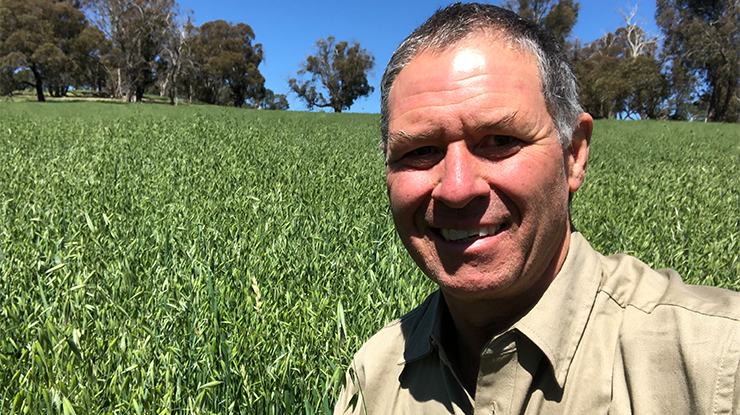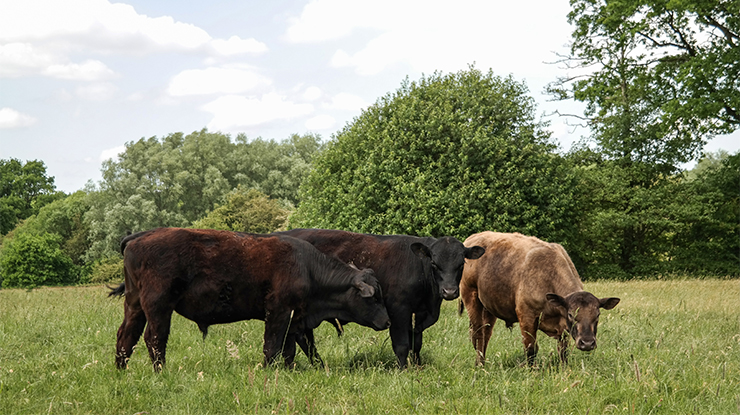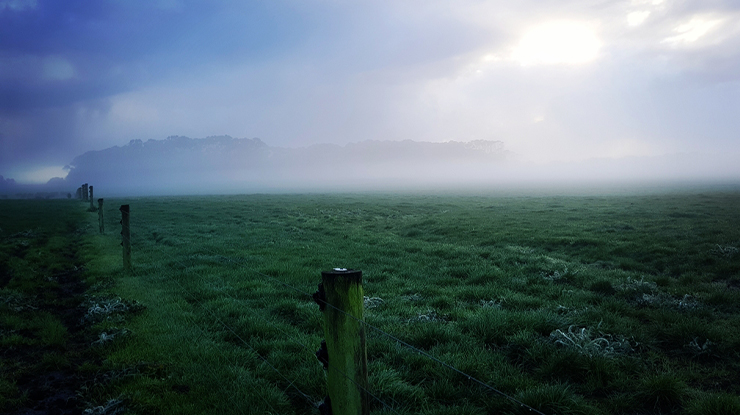 Central NSW-based agronomist and advisor, David Harbison, shares his top tips for managing winter pastures.
Central NSW-based agronomist and advisor, David Harbison, shares his top tips for managing winter pastures.
Managing the feedbase through winter and setting it up for spring is a critical time for many producers, particularly in southern Australia.
With winter well underway, central NSW-based agronomist and advisor, David Harbison, D R Agriculture Pty Ltd, shares his top tips for producers to consider when managing winter pastures:
- Understand your dry matter requirements
- Use strategic grazing in winter cleaning
- Set realistic targets
- Work with frost for weed control
- Know which pastures to prioritise
1. Understand your dry matter requirements
Managing the winter feedbase is about understanding the dry matter requirements of your herd or flock. The category of stock has a huge impact on feedbase demand and what you’re trying to achieve.
Normally, we’d see winter as a significant feed gap and it still is for many producers this year. Using grazing crops or oats is ideal – not only is crop growth in the back end of autumn and early winter greater than pasture growth, but it also enables higher stocking rates in these paddocks and is an opportunity to give pastures an extended rest.
Prior to calving or lambing, stock can be used as a tool for preparing a paddock for winter cleaning.
If calving in August, you need a cracking paddock for those cows to go on to calve and be on a rising plane of nutrition for lactating purposes. If they’re starting to lactate, set aside paddocks so they’re getting (as a minimum of high quality green feed) 1,200—1,500kg DM/ha for sheep and 2,400—2,600kg DM/ha for cattle, and manage those minimums according to feed demand for the next 60 days.
For autumn calving enterprises, they need to be on better quality feed now and looked after over this winter period. Some may need to do hand feeding to supplement what’s in the paddock if they didn’t receive autumn rain.
If you’re trying to grow out/fatten weaner steers purchased or weaned in March/April and you’re carrying them over winter, ideally, they’re going to need good quality fresh growth – a high energy, high protein-type diet.
2. Use strategic grazing in winter cleaning
After years of drought, producers in regions that have received good autumn rain this year are now dealing with weed burdens they haven’t seen for a long time.
If you’re looking to conduct a winter cleaning program, preparation is just as critical as carrying it out. Weed size this year has most likely already exceeded that considered ‘controllable’, so managing the burden now needs more than chemicals (if that is the planned approach) – you need to use your stock to graze strategically and help relieve the burden.
Monitor the worst paddocks and know where the problem weeds and grasses are – focus on them over the next three to four weeks.

One of the biggest issues that will impact the ability to prepare for winter cleaning is the lack of livestock. If you can target and manage the worst areas for weeds really well (perhaps up to a third of your property), that might be the best outcome (instead of trying to do half or three-quarters of the property poorly). That’s a realistic target.
Try to graze those target paddocks down to between 1,000kg DM/ha and 1,200kg DM/ha. This aims to take the leaves off the desirable grasses and clovers, while exposing as much broadleaf as possible. The target weed species are more exposed, receive more chemistry, and usually, a better result is achieved. By default, the desirable grasses and clovers have got less leaf area present and so take less chemistry, and ideally will be less impacted.
When choosing chemistry, be well aware of the grazing withholding periods required to be observed. The longer the grazing withhold period, the less suitable it will be to get the best results this year, as grazing can be a very useful tool in assisting with weed management, and an integrated program will be required.
4. Work with frost for weed control
Frost impacts our ability to undertake winter broadleaf management because for most of the chemical options, a certain number of frost-free days before or after application (some both) is required, which is rarely possible in some regions.
Try to work with forecasts and frost predictions and avoid those frosty mornings to get the best from any winter broadleaf management programs.

5. Know which pastures to prioritise
Much of the ‘winter cleaning’ program focuses on the broadleaf weed issues, however, annual grasses can be equally competitive to our desired pasture species. A key difference here is which annual grasses are problematic, and the timing of strategies chosen.
Annual ryegrass and dare I say it, barley grass, can provide great dry matter over winter. Grazing them during this period with growing stock can provide a ‘win-win’ during this period. They can provide quality feed, while resting the more desired perennial pastures on other parts of the property.
Building a wedge of feed for early spring in these annual paddocks may give an opportunity to provide maintenance feed, for dry cows and dry ewes, to be utilised before these species set seed. Grazing them hard can help reduce seed set, but it will not stop it.
The only time barley grass will be of any value to anybody is over winter, and if we can restrict the amount of dry matter that the barley grass and annual ryegrass has by the end of September/October, then we’ve immediately had an impact on weed seed set.



